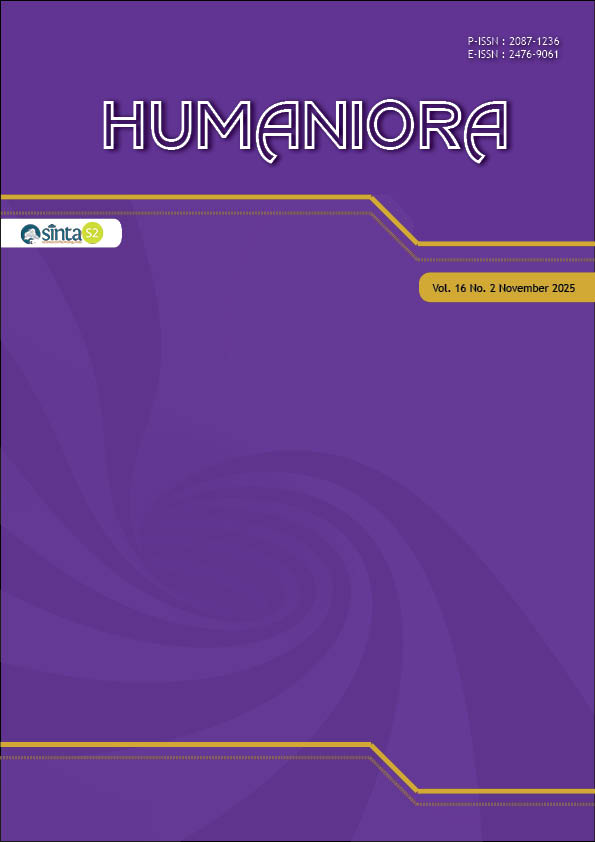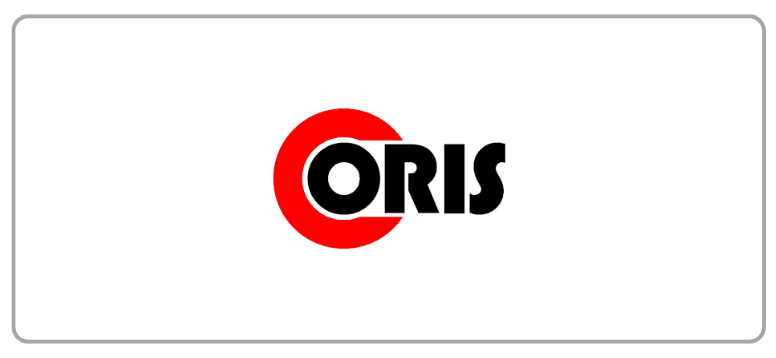The Acculturation of Chinese Cultural Values in Balinese Painting:
Historical and Aesthetic Perspectives
Keywords:
Balinese painting, Chinese cultural value, acculturation, aestheticsAbstract
The interaction between Chinese cultural values and Balinese traditions significantly influences Balinese painting, resulting in a unique artistic identity that merges visual forms and aesthetic ideas. This article examines how Chinese cultural values influence the evolution of traditional Balinese painting, with a focus on the processes of cultural adaptation and transformation. The aim is to identify and analyze how Chinese elements integrate into Balinese visual art while preserving local traditions. A qualitative research method is employed, combining a historical approach with a visual analysis of selected artworks. The research highlights various Chinese cultural influences, including the Yin-Yang philosophy, cosmological concepts, and visual motifs such as dragons, Barong Landung, Barong Ket, Chinese coins, Nekara Pejeng, Karang Sae, and Chinese-inspired patra decorations. It also examines coloring techniques, tools, and art materials that originate from or are inspired by Chinese practices. The findings indicate that Balinese artists creatively incorporate these elements through acculturation, blending them with local forms, colors, and symbols. Rather than being a passive adoption, this process results in a dynamic transformation that enriches the aesthetic and symbolic language of Balinese painting. The originality of the research lies in its systematic analysis of Chinese contributions to the visual and technical aspects of Balinese art, which are often overlooked in existing literature. The research enhances the understanding of cultural hybridity in Southeast Asian art and provides a valuable framework for studying cross-cultural influences in traditional artistic practices.
References
Aryana, I. G. M. (2017). Kuasa di balik harmoni: Etnografi kritis relasi etnis Tionghoa dan etnis Bali di desa Pupuan, Tabanan, Bali. Jurnal Kajian Bali, 7(01), 1-16.
Astajaya, I. K. M., & Ria, N. M. A. E. T. (2021). Pendidikan Multikultur Dalam Aktivitas Keagamaan Di Konco Pura Taman Gandasari Desa Dangin Puri Kaja Kecamatan Denpasar Utara Provinsi Bali. Scaffolding: Jurnal Pendidikan Islam Dan Multikulturalisme, 3(1), 44-57.
Belo, J. (Ed.). (1970). Traditional Balinese Culture. Columbia University Press.
Berry, John W. (2003). Conceptual Approaches to Acculturation. In Acculturation: Advances in Theory, Measurement and Applied Research, ed. Kevin M. Chun, Pamela B. Organista, and Gerardo Marín (pp. 17-37). Washington, DC: American Psychological Association.
Brata, I. B. (2019). Menyama Braya: Refleksi Multikulturalisme Memperkuat Identitas Nasional. Media Bina Ilmiah, 13(8), 1493-1500.
Budiana, I. P., Karja, I. W., & Budiaprilliana, L. (2024). Visualization of The Barong Landung of The Abiantuwung Tabanan Village In Paintings. Cita Kara: Jurnal Penciptaan Dan Pengkajian Seni Murni, 4(2), 34–41. https://doi.org/10.59997/ctkr.v4i2.3294.
Coppel, Charles A. (1994). Tionghoa Indonesia Dalam Krisis. Jakarta: Pustaka Sinar Harapan.
Covarrubias, M. (2018). Island of Bali. Routledge.
Fang, T. (2012). Yin Yang: A new perspective on culture. Management and Organization Review, 8(1), 25-50.
Geriya, I Wayan. (2008). Pola Hubungan Antaretnis Bali dan Tionghoa dalam Dinamika Kebudayaan dan Peradaban. In Integrasi Budaya Tionghoa ke Dalam Budaya Bali (Sebuah Bunga Rampai), Sulistyawati (ed.). Denpasar: Universitas Udayana Bali.
Hauser-Schäublin, B., & Harnish, D. D. (2014). Between harmony and discrimination: Negotiating religious identities within majority-minority relationships in Bali and Lombok (Vol. 3). Brill.
Huang, S. S. S. (2020). Picturing the True Form: Daoist Visual Culture in Traditional China (Vol. 342). Brill.
I Made Ruta, & I Wayan Karja. (2023). Balinese Hindu Philosophy in Mandala Painting. International Journal of Social Science and Human Research, 06(04), 2389–2397.
I Made Suparta, I Wayan Karja, & Ketut Muka. (2023). Balinese Ornaments. International Journal of Social Science and Human Research, 06(06), 3345–3353. https://doi.org/10.5281/zenodo.8021512.
Jaman, I. G. (1999). Fungsi dan manfaat rerajahan dalam kehidupan. Paramita.
Karja, I. W. (2020). Kosmologi Bali Visualisasi Warna Pangider Bhuwana dalam Seni Lukis Kontemporer. UNHI Press.
Karja, I. W. (2023). Abstract Painting of Bali: A Fusion of Art, Religion, and Philosophy. Hong Kong Journal of Social Science, 61, 26-35.
Karja, I. W. (2023). The History of King Udayana In Visual Narrative. Journal of Southwest Jiaotong University, 58(4). http://jsju.org//index.php/journal/article/view/1746.
Karja, I., & Feldman, R. (2024). The Ancient Tantric in Balinese Contemporary Art. Jurnal Kajian Bali (Journal Of Bali Studies), 14(2), 324-347. doi:10.24843/JKB.2024.v14.i02.p02
Karja, I. W. (2024). The Influence Of Chinese Cultural Values On Balinese Traditional Painting. Proceeding Bali-Bhuwana Waskita: Global Art Creativity Conference , 4(1), 23–33. https://doi.org/10.31091/bbwp.v4i1.592
Kempers. (1956). Bali Purbakala. Jakarta: Balai Buku Indonesia.
Kim, Young Yun. (2001). Becoming Intercultural: An Integrative Communication Theory and Cross-Cultural Adaptation. USA: Sage Publication.
Liu, J. J. (2022). The Art of Chinese Poetry. Routledge.
Maharlika, F. (2018). Studi multikultural pada ornamen Bali pepatraan: Patra Cina. Serat Rupa Journal of Design, 2(1), 67-77.
Pitana, I. (2010). Tri Hita Karana – The Local Wisdom of the Balinese in Managing Development. In: Conrady, R., & Buck, M. (eds) Trends and Issues in Global Tourism 2010. Springer, Berlin, Heidelberg. https://doi.org/10.1007/978-3-642-10829-7_18
Purawati, N. K., Kartikayasa, I. N., Hendrawan, M., & Darmada, I. M. (2020). Pengaruh Budaya Cina Pada Pura Dalam Balingkang di Desa Pinggan, Kintamani, Bangli: The Influence of Chinese Culture on the Dalam Balingkang Temple in Pinggan Village, Kintamani, Bangli. Social Studies, 8(1), 91-98.
Rai, S., I Wayan, M., Anak Agung Ayu Oka, S., I Ketut, M., & I Wayan, K. (2024). The Acceptance of Wayang Kamasan Porcelain Ceramics at Petitenget Temple Bali. Mudra Jurnal Seni Budaya, 39(3), 347–354. https://doi.org/10.31091/mudra.v39i3.2795.
Ria, N. M. A. E. T. (2020). Barong Landung: Akulturasi Budaya Bali Dan Tionghoa. Jurnal Penelitian Sejarah dan Budaya, 6(2), 270-296.
Rohmah, L. A. (2018). Kajian Terhadap Rasm Dalam Naskah Mushaf Al-Qur’an Madura. AL ITQAN: Jurnal Studi Al-Qur’an, 4(2), 27-54.
Soekmono, R. (1973). Sejarah Kebudayaan Indonesia I. Kanisius, Yogyakarta.
Stuart-Fox, D. J. (2002). Pura Besakih: Temple, Religion, and Society in Bali. Leiden: Brill.
Sulistyawati, Made. (2008). Integrasi Budaya Tionghoa ke dalam Budaya Bali. Denpasar: Universitas Udayana.
Sudiana, I. G. N., Nuriawan, I. N. A., & Sari, N. P. R. (2022). Jejak langkah multikulturalisme di Pura Pabean Pulaki Singaraja Bali. Journal of Bali Studies, 12(1).
Utami, L. S. S. (2015). Teori-teori adaptasi antar budaya. Jurnal Komunikasi, 7(2), 180-197.
Weifen, Q. (2022). A Study of Traditional Chinese Elements in Balinese Culture: An Acculturation Perspective. ARISTO, 11(1), 71-97.
Welsch, W. (1999). Transculturality: The puzzling form of cultures today. Spaces of Culture: City, Nation, World, 13(7), 194-213.
Yan, Z. (2020). Acculturation and well-being among international students: Challenges and opportunities. Rethinking Education Across Borders, 303-315.
Widiarya, G. (2013). Pura Negara Gambur Anglayang di Desa Pakraman Kubutambahan, Buleleng, Bali (Sejarah, Struktur, dan Potensinya Sebagai Media Pendidikan Multikultural bagi Masyarakat Sekitarnya). Widya Winayata: Jurnal Pendidikan Sejarah, 1(1), 1–11.
Published
How to Cite
Issue
Section
License
Copyright (c) 2025 I Wayan Karja

This work is licensed under a Creative Commons Attribution-ShareAlike 4.0 International License.
Authors who publish with this journal agree to the following terms:
a. Authors retain copyright and grant the journal right of first publication with the work simultaneously licensed under a Creative Commons Attribution License - Share Alike that allows others to share the work with an acknowledgment of the work's authorship and initial publication in this journal.
b. Authors are able to enter into separate, additional contractual arrangements for the non-exclusive distribution of the journal's published version of the work (e.g., post it to an institutional repository or publish it in a book), with an acknowledgment of its initial publication in this journal.
c. Authors are permitted and encouraged to post their work online (e.g., in institutional repositories or on their website) prior to and during the submission process, as it can lead to productive exchanges, as well as earlier and greater citation of published work.
USER RIGHTS
All articles published Open Access will be immediately and permanently free for everyone to read and download. We are continuously working with our author communities to select the best choice of license options, currently being defined for this journal as follows: Creative Commons Attribution-Share Alike (CC BY-SA)


















